When Chinese refugees came to Cho Lon (Saigon’s Chinatown) over 200 years ago, not only did they bring their delicious cuisine, but they also brought with them their traditions, culture, and etiquette. In Chinatown, there are certain rules that are known among those that live there, but are generally unspoken of. Visitors are usually completely clueless, and sometimes even end up offending others with their actions. Are you curious yet? Keep scrolling down for a list of interesting “secrets”, some local restaurants that sell good food and safety advice.
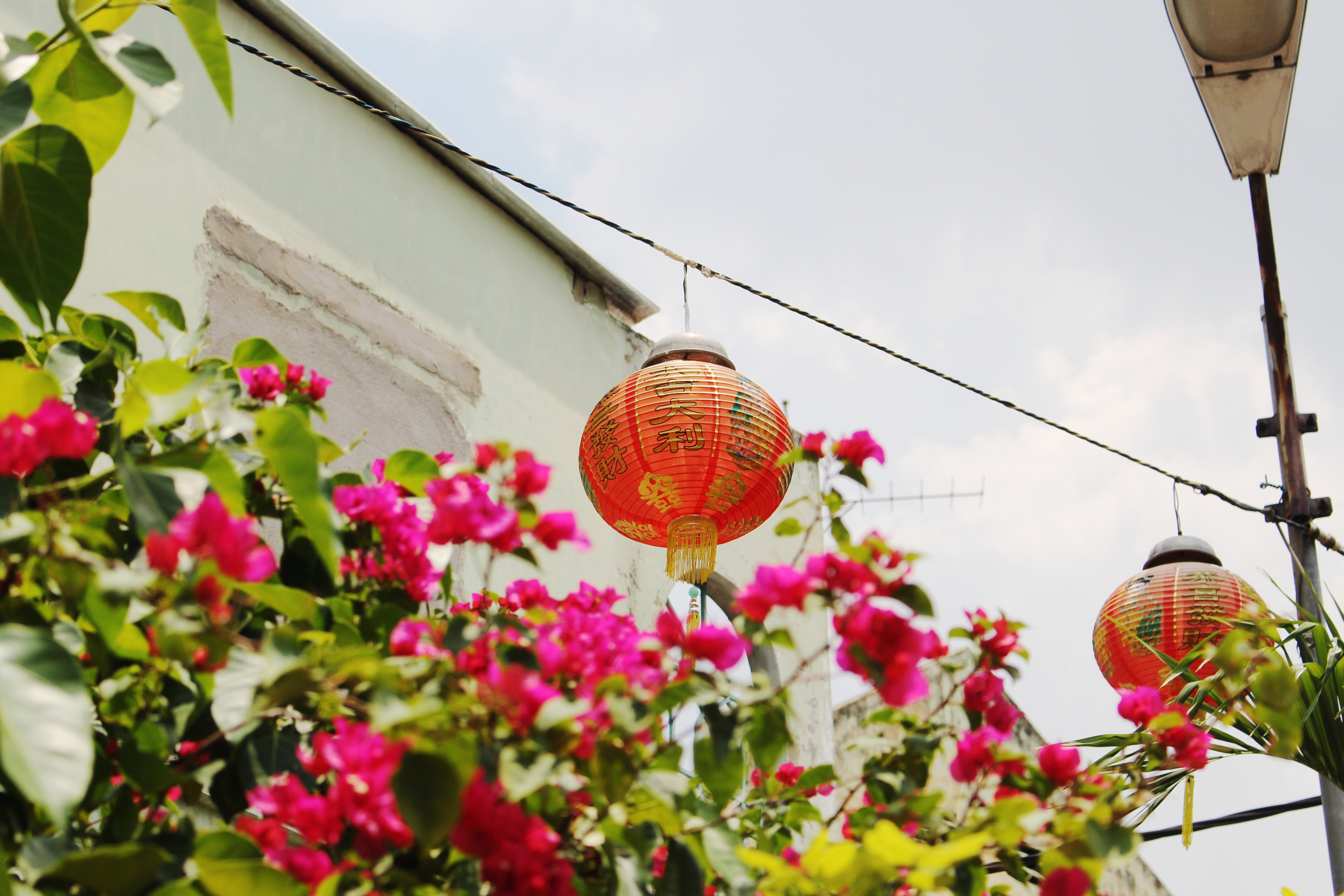
Contents
Introduction
Spreading over half of District 5, and a considerable section of District 6, Cho Lon is the biggest Chinatown of Vietnam. The name “Cho Lon” directly translates to Big Market. The original Cantonese name is “Tai-Ngon” and Mandarin name is “Di’an”, both of which mean “embankment.”
Before merging with Saigon in the 1930’s, Cho Lon used to be a city in itself. In the past, many Chinese refugees ran away from war in their country, and resettled in Cho Lon, creating a Chinese community overseas. The Minh Huong village was the first Chinese settlement. In 1778 and 1782, the Hoa people from Pho Islet (Bien Hoa, nowadays) ran away from the massacre of Tay Son, looking for a place to resettle. Here they built high embankments against the flow of the river and called the new land “Tai-Ngon.”
During the Vietnam War, Cho Lon was a big black market where soldiers and deserters traded US Army-issued items and various American goods.

What You Can Expect From Cho Lon
Food in Chinatown
Chinatown is a heaven for foodies – you can find lots of different dishes for cheap prices. Here are a few you should try:
Banh xeo (Vietnamese pancake)

Banh xeo is essentially Vietnamese pancake. The way it is prepared differs throughout the country. In Cho Lon, the preparation follows southern methods, making the end product a shiny yellow crepe with prawns, sliced pork onion and bean sprouts inside. When you eat it, you will roll a piece within a salad leaf and dip it in sweet fish sauce.Banh xeo Le Quang Sung at 81A Le Quang Sung, Ward 12, District 6 is the best restaurant according to the locals in Cho Lon. It was founded more than 70 years ago. The pancake wrapper is crispy, the prawns are fresh and the fish sauce served there is delicious. Besides banh xeo, they also serve other food such as: banh cong (Vietnamese fried shrimp cake) and spring rolls. The price is quite reasonable – only 45,000 VNĐ for a banh xeo, 12,000 VND for a banh cong and 6,000 VNĐ for 1 spring roll.
Read more: All About Banh Xeo
Pho
It would remiss of me to not mention pho, especially when we are talking about food. Pho is Vietnam’s de-facto national dish. Find your best bowl of Pho in district 6 at Pho Xuan Mai (63 Nguyen Thi Nho, Ward 2, District 6)
Read more: The Best Pho in Saigon
Xoi Bat Buu (Chinese Sticky Rice)
Together with bánh mì, xôi (sticky rice) is a common street food that Vietnamese people love to eat during any time of the day. Xôi Bát Bửu is a Chinese dish that that is hard to find anywhere else other than in Chinatown. I personally love the flavor you taste from the mixed ingredients – it’s sweet and sour from the char siu (grilled pork), Chinese sausage, salted radish and dried shrimp. It also smells good because of the soy sauce used and the use of shiitake mushrooms makes it a wonderful addition in terms of taste and texture.
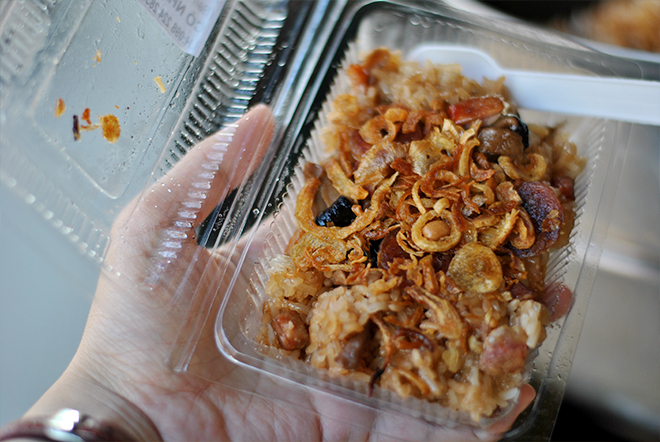
You can find this dish in 254 Lê Quang Sung, Ward 6, District 6. The price is 15,000 VNĐ for a packet of Xôi.
Chestnut bubble tea
You can find bubble tea in every corner of Saigon. But what makes Chinatown’s bubble tea special is the topping. Instead of using tapioca pearls to make the bubble balls, this one shop in Cho Lon decided to be creative by using chestnuts covered with flour and so making the bubbles crunchier when you chew. The cheese balls and cheese pudding served there are also worth a try.
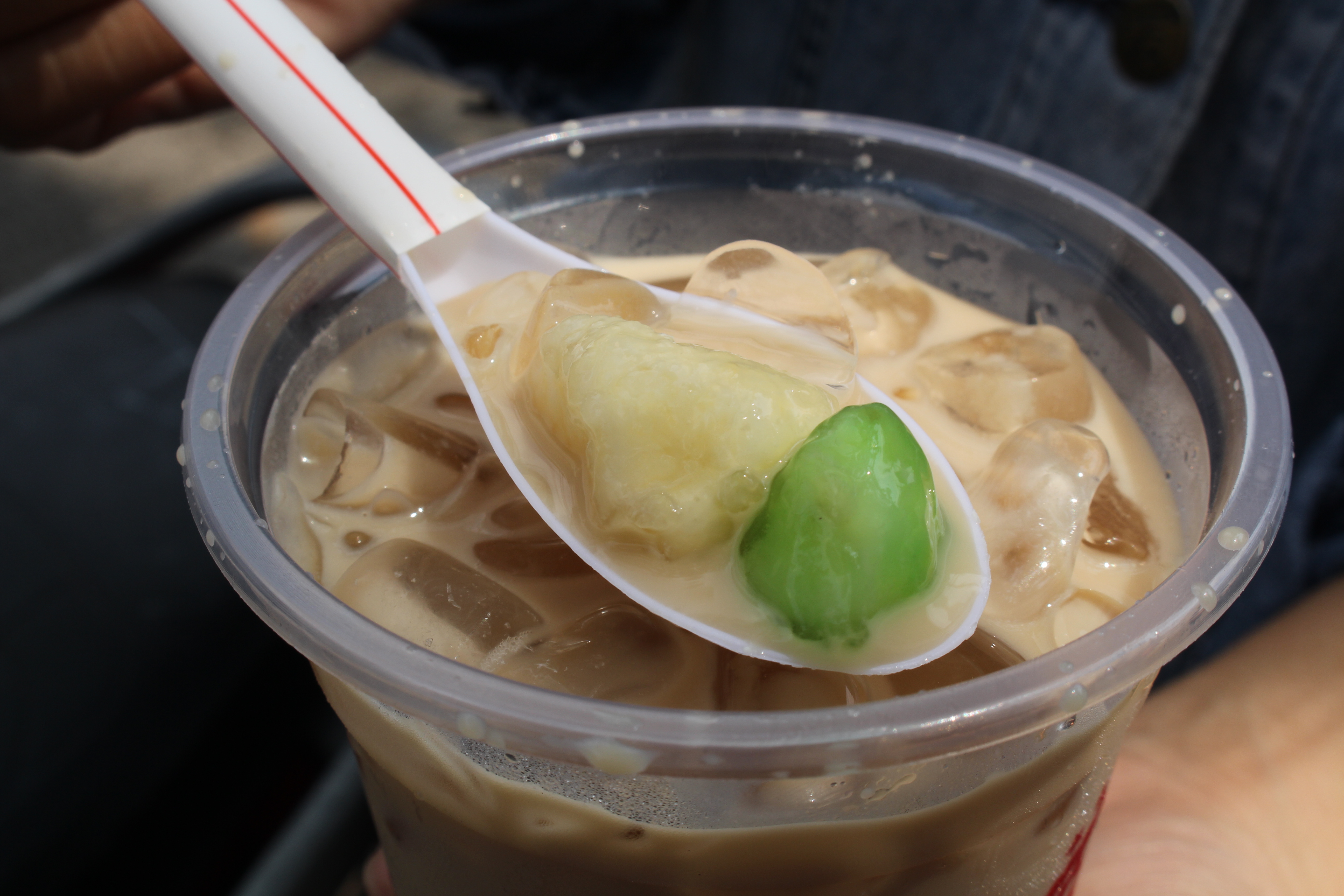
You can go to Tra sua Chi Lang at 199/9 Le Quang Sung, Ward 6, District 6 to get yourself a cuppa milk tea topped with cheese balls. The price ranges from 15,000 VNĐ to 30,000 VNĐ depending on the topping you choose.
Dim sum
What about Chinese dim sum? Just like sushi, dim sum in Saigon is mainly sold in fancy restaurants at higher prices. But hey, when you are in Chinatown, you can expect to find mouth-watering dim sum on the streets and they barely cost you a dollar.

On 201 Le Quang Sung, Ward 6, District 6 there is a small place that sells dim sum for only 1,000 VNĐ a piece of ha cao and 3,000 VNĐ for a piece of xiu mai. Xiu Mai is definitely more delicious to me. Besides ha cao and xiu mai, you can also find banh he (Chinese chive cake).
Hot ga tra (Chinese egg tea soup dessert)
The Chinese egg tea soup is made of peeled egg, Chinese herbal tea, sugar, and water. Certainly sounds weird to put egg in tea, but this is worth a try!
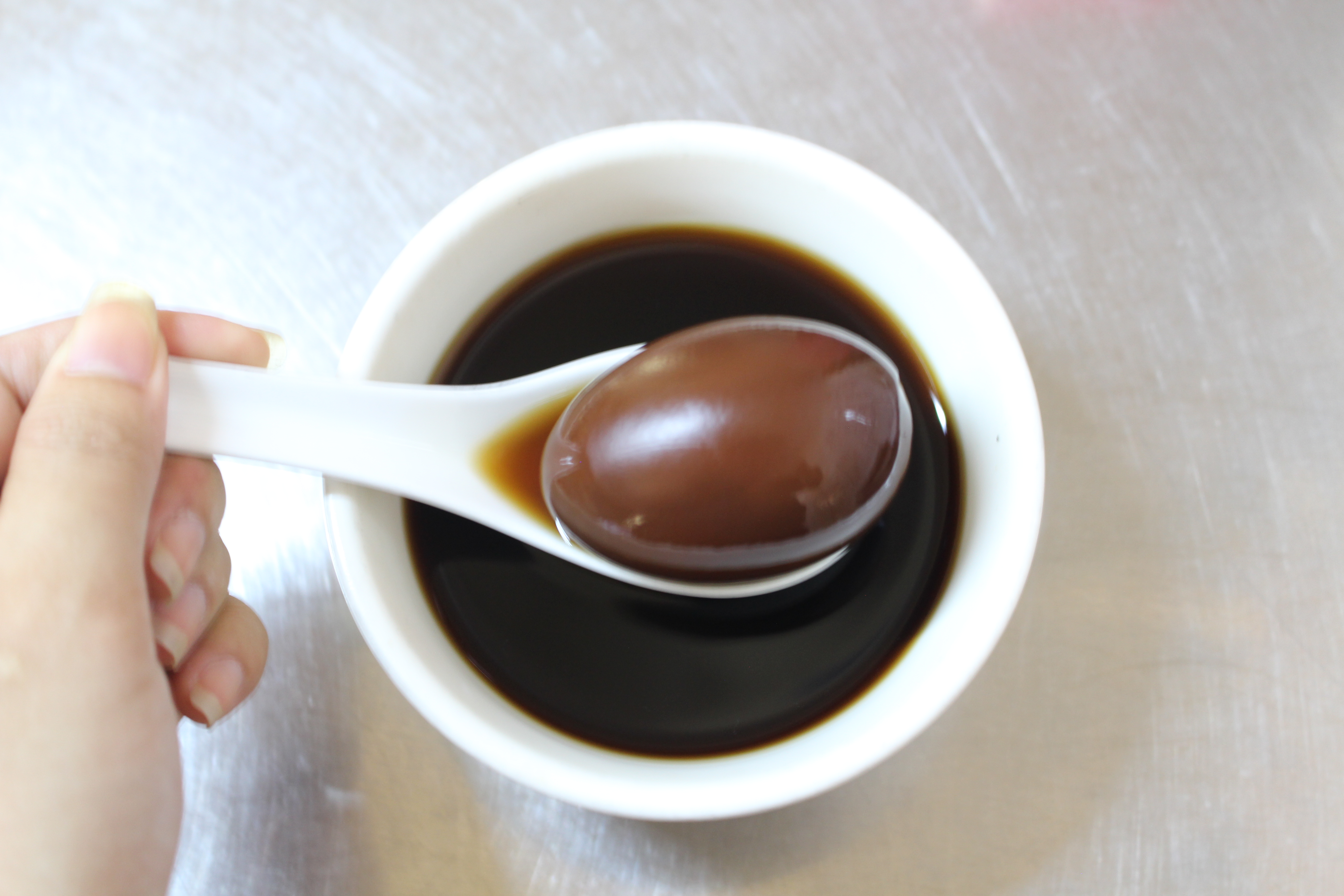
There are some places where you can find hot ga tra in Chinatown:
- Che Ha Ky is the most famous among the shops serving this in Chinatown. Apart from Chinese egg tea soup, they also serve more than 38 different types of sweet soups priced reasonably: 20,000 VNĐ for a bowl of hot ga tra and from 15,000 to 25,000 for other che.
- Che Cot Dien on 476 Tran Hung Đao, Ward 14, District 5 was started by a Chinese refugee in 1938 who served only a pot of green bean sweet soup. More than 70 years later, the shop is now famous among other districts too. You can find hot ga tra for only 20,000 VNĐ and the price for other sweet soups start from 15,000 – 30,000 VNĐ
Pagodas in Chinatown
Ba Thien Hau Pagoda
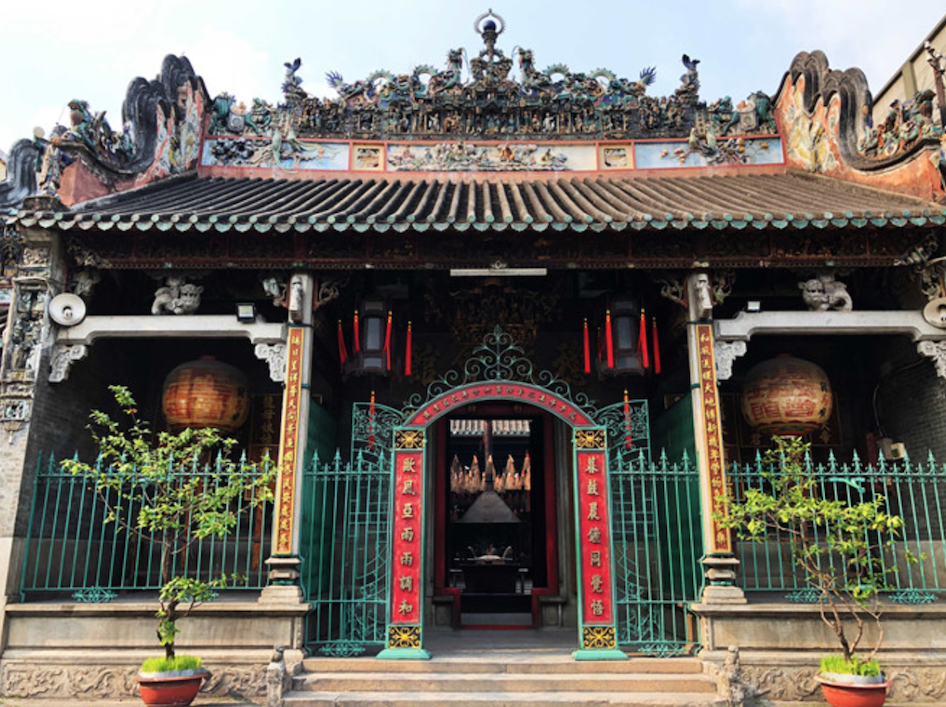
Established by a group of Cantonese speaking Chinese in the 18th century, this is one of the oldest temples of Saigon. This pagoda plays a crucial role in the religious life of the locals. Since its establishment, this place has been a common gathering space for Chinese immigrants, where they can catch up with and support each other away from their hometown. This pagoda worships Goddess Thien Hau, who can foresee the future and is known to save fishermen from storms. It was also due to this belief that, 200 years ago, the Chinese immigrants brought the spiritual symbol of Goddess Thien Hau all the way from China to Vietnam during their trip through the ocean.
Apart from such a beautiful religious faith, you will also admire the old Oriental architecture that is cleverly featured all around the temple. The sculptures crafted to decorate the walls and roofs are so meticulous and well maintained throughout the centuries that you should pay close attention to each one when you visit.
Every year, on the 23rd of Lunar March, the temple solemnly celebrates the incense rite to pay homage to Goddess Thien Hau. This is a great chance to witness the importance of this temple to its people and the celebrations begin at 7 AM.
Address: 710 Nguyen Trai, District 5, HCMC
Phuoc An Temple
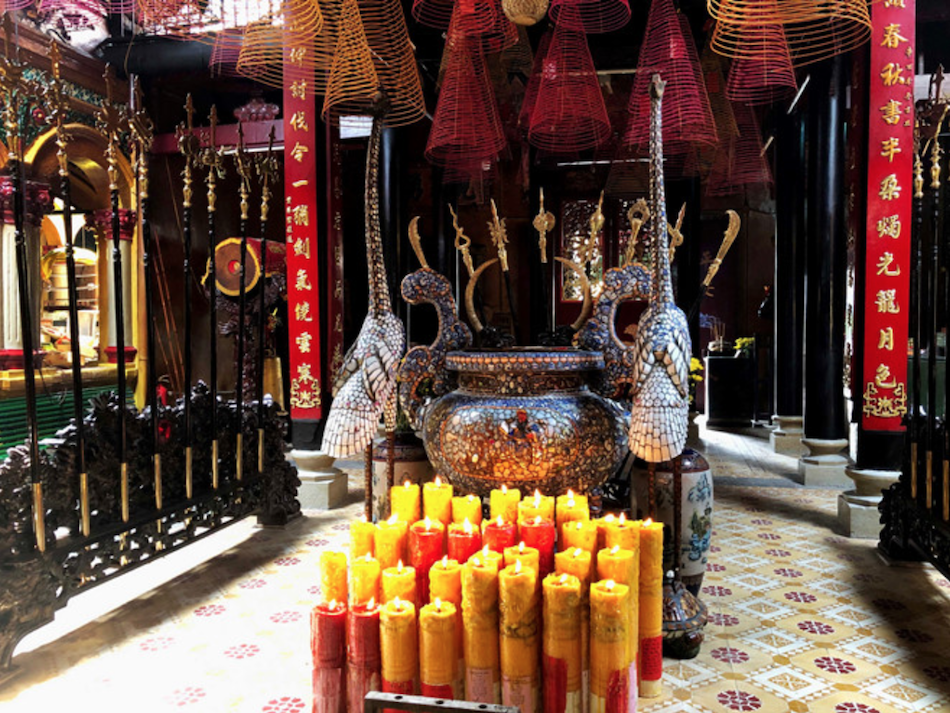
This temple was built by the Chinese immigrating from Guangdong, Fujian, and Zhejiang province, China. In 1865, this temple was founded on the grounds of the collapsed Hoa An temple. In 1902, Phuoc An temple was renovated. However, the typical architectural features brought from the hometown of the founders are well retained still today!
It is no exaggeration to say that the wood sculptures are the most remarkable features of this Oriental temple. On the 24 fastidiously created wooden artworks hung on the walls, the artisans expressed their great reverence to the integrity of the worshipped gods.
Every year, on the birthday of Quan Thanh De Emperor (13th of Lunar January), the locals hold a sacred celebration at this temple. This god was a historical mandarin, who was famous for this integrity. You can partake by burning incense.
Address: 184 Hong Bang, District 5, HCMC
Quan Am Pagoda
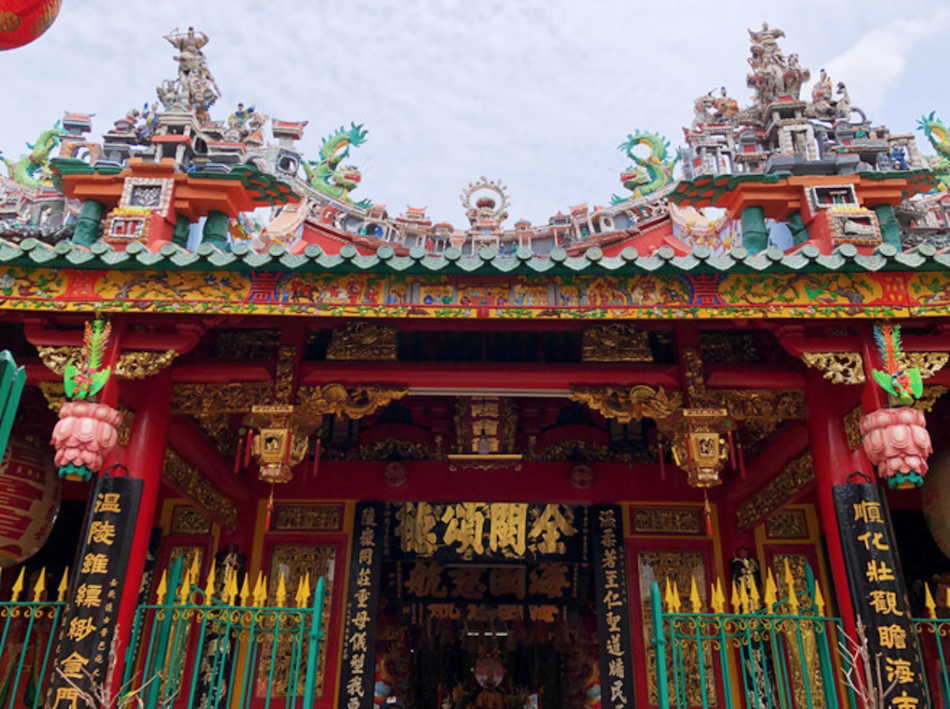
This sacred temple was built during the second half of the 18th century by the Chinese from Fujian province. Quan Am refers to a Bodhisattva who often silently supports people in need. People worship this Bodhisattva who appears as a gentle lady. In Quan Am pagoda, you will not see the sculpture of a Bodhisattva in an elegant white dress like in other pagodas, but that of Goddess Thien Hau. This is, however, very normal and does not contradict any religious beliefs.
You will find a small lake built in 1908 in front of the main hall. It is, according to Fong Shui, a way to accumulate good energy (qi) for the temple. Today, it is not only the Fujian people but also people from the surrounding areas that come here to worship the compassionate Goddess and make beautiful prayers.
You will find a small lake built in 1908 in front of the main hall. It is, according to Fong Shui, a way to accumulate good energy (qi) for the temple. Today, it is not only the Fujian people but also people from the surrounding areas that come here to worship the compassionate Goddess and make beautiful prayers.
Address: 12 Lao Tu, District 5, HCMC
The rules
The Hoa community teaches their kids to always preserve their rich customs and culture. The children are told to speak Chinese when at home and also told to follow these rules:
1. Visit the pagoda
On the 15th and 16th of every month in the lunar calendar, many Hoa people usually go to the pagoda to pray for luck, health, wealth, and love. In Cho Lon, there are many charming Chinese-style pagodas, built centuries ago, and people go to different pagodas to pray for different things.

For example: Many Hoa people go to Chua Minh Huong pagoda (184, Hong Bang, Ward 6, District 5), to pray for prosperity and fortune before they start their business. Those who are seeking their soul mate will pray for love in Chua Ong pagoda (676 Nguyen Trai, Ward 11, District 5). Chua Ba Thien Hau pagoda (710 Nguyen Trai, Ward 11, District 5) is dedicated to goddess Thien Hau and here people ask for safety and protection for themselves and their loved ones. Which one will you visit? Or will you visit all three? Even if you don’t believe in prayers, you can still visit these temples to revel in their beauty and watch others as they ask for peace of mind.
2. Follow superstitions
Superstitions are everywhere but the Hoa people take it to a whole new level. Some examples are:
a. Don’t be the first to buy from a shop if you believe that somehow you may bring bad luck to the shop and prevent them from attracting more customers.
Each business has its ups and downs. But some superstitious Hoa people (and even some Vietnamese) believe that there are people that bring good vibes and bad vibes. If a person with good vibes walks in, the business will blossom, which means that if a person with bad vibes walks in, the opposite will happen. Bad vibes will send negative energy and may discourage customers from entering the shop. Could it be true? Maybe you should find out.
If a person with good vibes walks in, the business will blossom, which means that if a person with bad vibes walks in, the opposite will happen.
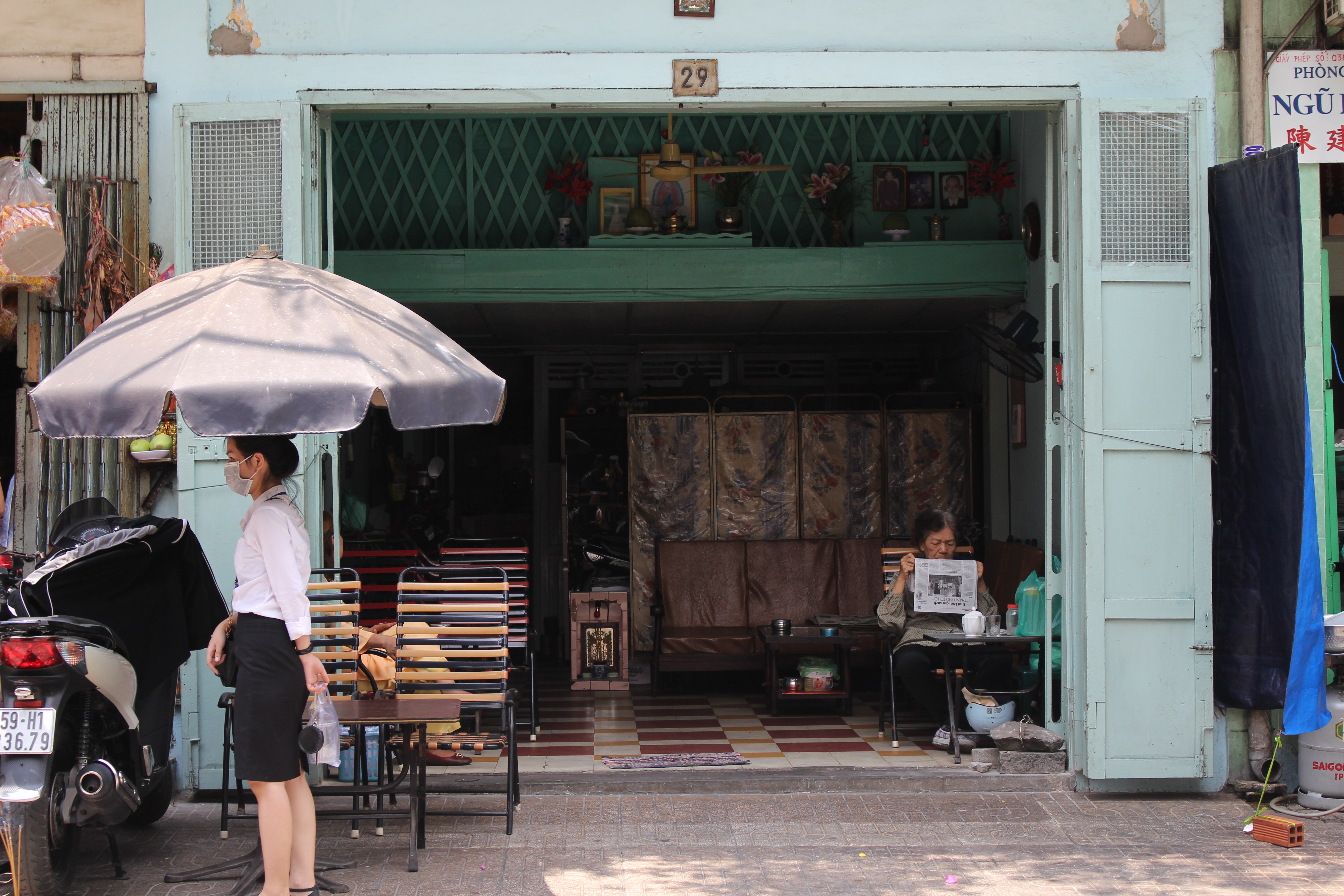
The funny thing is that if you are the one with good vibes, you will not get a discount on your bill. But if you are the one with the bad vibes, the seller will not be happy and may perform a ritual – called ‘Dot phong long’ in Vietnamese. However, do not worry because it is not going to affect your luck in a negative way. It’s all superstition right?
How to tell if you are the one bringing in bad vibes
- When you enter a busy shop and most of the customers suddenly leave, then it’s you! So pay attention next time when you go shopping or eat out in a restaurant.
- If you have a local friend, just ask them what their opinion is.
b. Don’t get a haircut in January or the first day of every month (Lunar calendar) because it is taboo
Although this is based on no science, many Hoa people still avoid getting a haircut in January or the first day of the month in the Lunar calendar because they think it is going to bring them bad luck which may mean losing money at a later time.
c. Don’t take a picture of 3 people
It is said that if there are three people in a photo, the one in the middle will die first. Though it is obviously odd, you should avoid taking pictures of three when you are with Hoa people (and some Vietnamese as well).
d. Ram Thang Bay (Full moon day of July)
July is said to be the month of “homeless souls” in Vietnam. Besides making ceremonial offerings to pray for the wandering souls every day, many Hoa families in Cho Lon usually add money to their offerings on full moon days. After the worshiping ceremony, the money and food (usually fruits and sweets) will be thrown on the street. The amount of money depends on the size of the family business. People believe that the more money they sacrifice, the more successful their business will be.
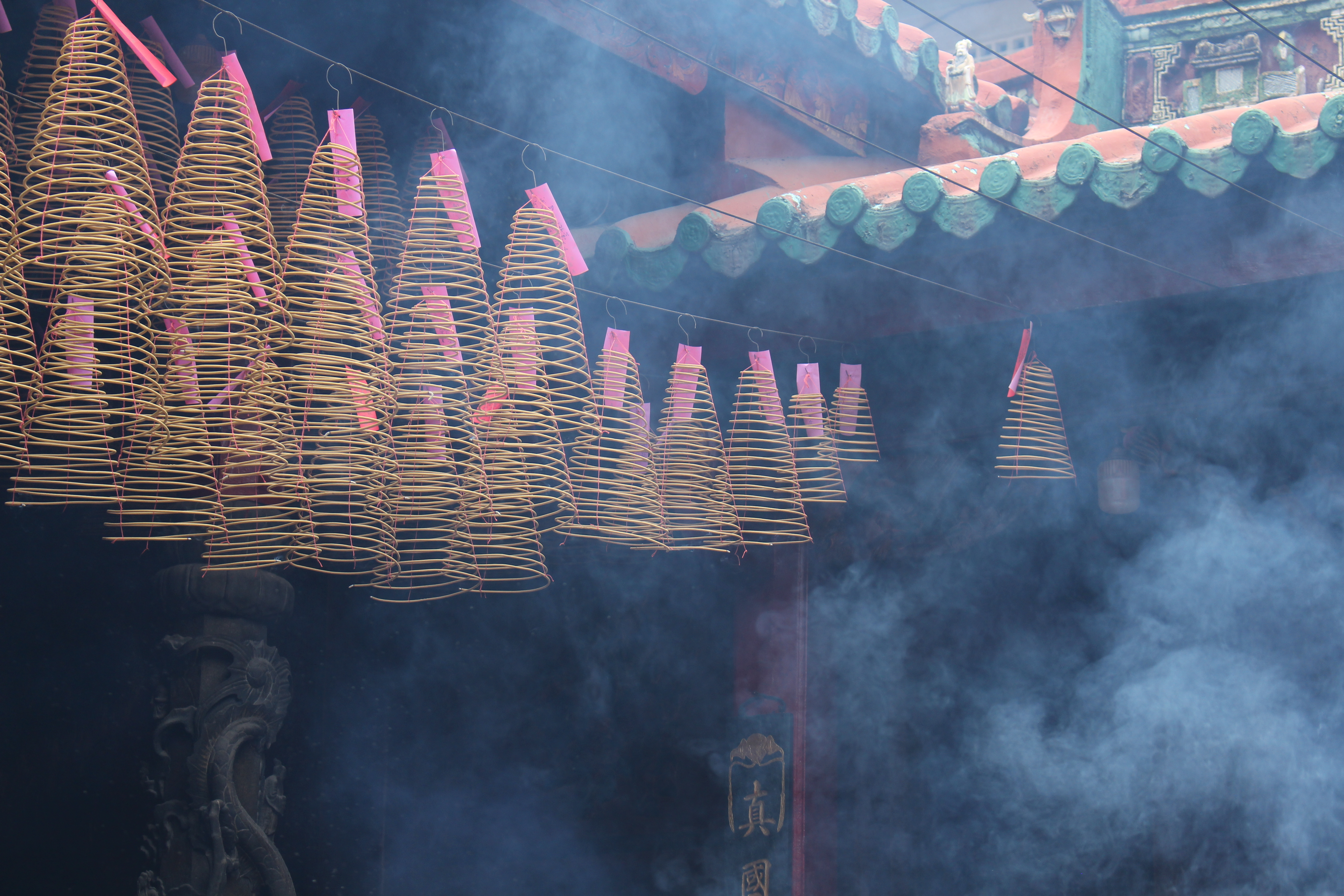
3. Don’t gift certain things because they are taboo
If you are invited as a guest of a Hoa family in Cho Lon, be careful in what you bring. Here are some items that are considered taboo:
- A clock/watch: Superstitious Hoa people believe that the clock/watch is a symbol of “running out of time”.
- A pair of shoes: The word shoes sounds like evil and it’s something you step on, so it is thought to be bad luck.
- A mirror: If you have Asian friends, you may have heard that if someone breaks a mirror, it is a bad omen. It is believed that mirrors can attract ghosts, so giving one to a Hoa member is not a good idea.
- A glass/cup: What is wrong with a cute glass or a cup? The problem is that in Chinese “a glass” sounds similar to “dispersal” so it is believed that it will split people up.

Note: Number four is considered to be the number of death (once again an issue with pronunciation – number four in Chinese is similar to the word “death”. So you shouldn’t bring anything in sets of four. On the other hand, eight is the number of luck).
4. Family meal
When you attend a lunch or dinner with a Hoa family, there are two things you should not do:
- Don’t leave chopsticks upright in your bowl of rice: This will resemble incense sticks which are usually offered to the dead.
- Don’t flip fish on its plate: This is a bad omen. Especially if there is a driver or a fisherman in the family. People fear that turning a fish over would capsize the boat when they go fishing or it could turn the steering wheel and cause an accident.
This is all for the superstitions that the Hoa people believe!
Keep your belongings safe!
Prevention is better than a cure and this can not only be applied to diseases but also to road safety and pickpockets! Here are a few tips that will be useful when traveling to Cho Lon:
- Taking good care of your belongings is necessary. Instead of using a handbag, it would be better to go for a backpack and wear it on your front.
- You shouldn’t wear valuable jewelry if you go to Chinatown by bike.
- If you ride a scooter and carry a bag, you should strap it to your front.
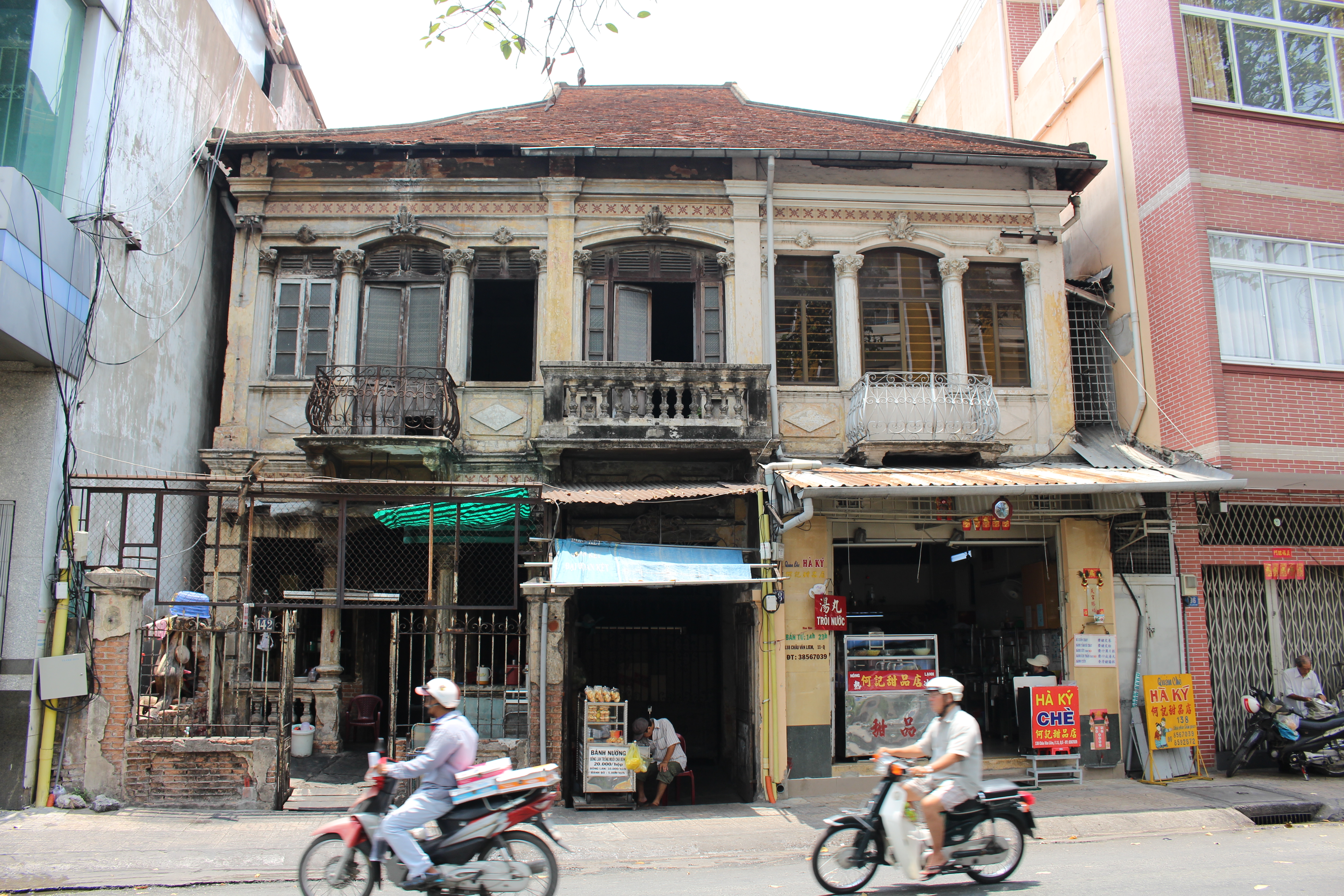
The idea is to just be rational and weary about your surroundings.
That was a lot to take in, right? Why not share this experience with a local friend as they guide you through Saigon? We offer a donation-based city tour lead by volunteer university students who love connecting with travelers and more importantly, are authentic experts at places to go and things to do in this city. To start off, we recommend sites which are famous tourist attractions like the War Remnants Museum or Central Post Office for you to try in case you are not sure where to go.
The better part of this special tour is it’s totally possible to customize to your personal preference! If Cho Lon has just landed on your checklist, just simply tell our guides that you would like to visit Cho Lon, or any other interesting spots. They will then work with you to see how you can make the most of your time. One thing to remember is that this is a donation-based tour so you’ll pay for your expenses and all the donations from guests will benefit the students directly.
By spending a day in Cho Lon, you will learn many things, especially about the customs of the Hoa people living in Saigon. Why don’t you take a day or two to explore this area and then leave a comment for me detailing your adventures? Have fun and keep your belongings safe!
Enjoyed this article and would like more fun information on what to see, do, and eat in Vietnam? Follow us at 4U Trip Blog!
Here is some recommended reading:
Explore Little Japan Town in Saigon
